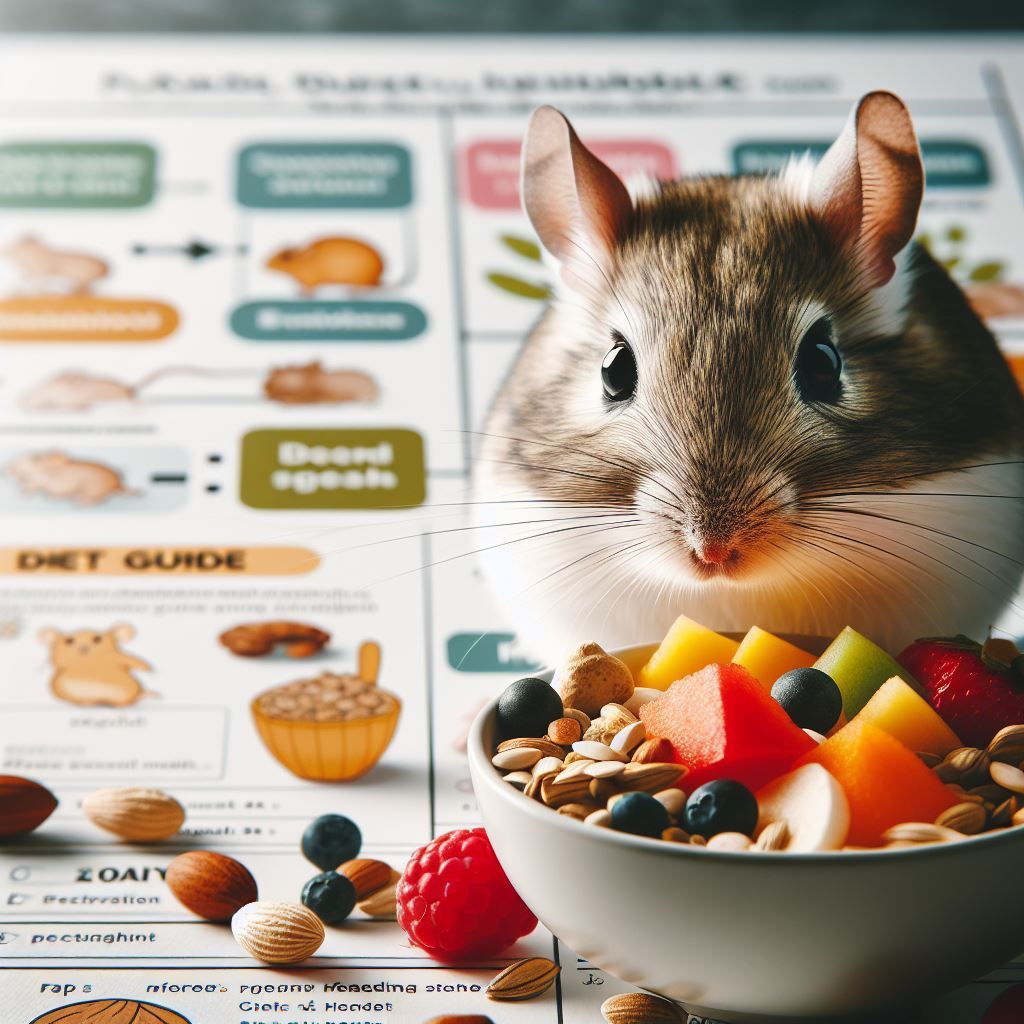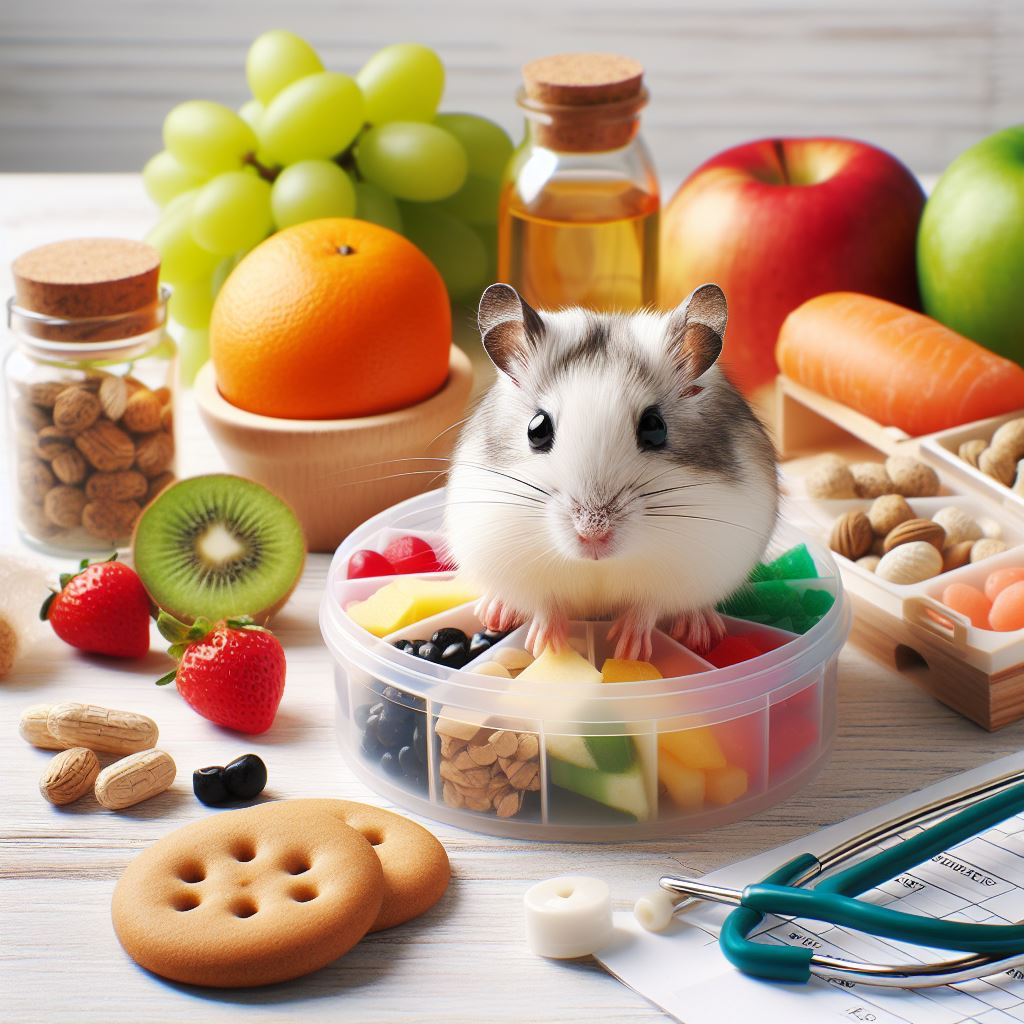What Gerbils Eat in the Wild
Gerbils are adorable small rodents native to arid and semi-arid regions of Africa and Asia, such as deserts, grasslands, and arid areas. Their natural habitats are typically dry, barren, and lacking water sources, requiring gerbils to possess specific adaptive abilities to survive and reproduce in such environments. One crucial adaptive feature is their dietary habits. Understanding what gerbils eat in the wild, how they obtain sufficient water and nutrients, and how they adjust their diet based on different seasons and food sources is a fascinating and insightful topic. In this article, I’ll share some knowledge about the wild diet of gerbils, aiming to provide a deeper understanding of these animals and offer insights and references for gerbil care.
Natural Diet of Gerbils
Gerbils are omnivorous animals, and their wild diet mainly consists of two categories: grass seeds and plants, and insects and small animals. These two types of food provide gerbils with the necessary carbohydrates, proteins, fats, vitamins, minerals, water, and fiber. Let’s explore the specific types and characteristics of these two categories of food that gerbils consume in the wild.
Grass Seeds and Plants
Grass seeds and plants constitute the majority of gerbils’ diet in the wild. Gerbils enjoy various grass seeds, including oats, wheat, barley, rye, sorghum, corn, and more. These seeds are rich in carbohydrates, providing the energy gerbils need. Gerbils also consume some leaves and herbs like willow, pine, eucalyptus, mint, thyme, and others. These plants contain essential vitamins and minerals that gerbils cannot synthesize themselves, along with beneficial compounds like antioxidants, volatile oils, and phenols, enhancing gerbils’ immunity and resistance.
Insects and Small Animals
Insects and small animals serve as another vital food source for gerbils in the wild. These provide high-quality proteins and fats, along with essential amino acids and fatty acids. Gerbils prefer consuming common insects and small animals found in deserts and grasslands, such as grasshoppers, worms, beetles, spiders, centipedes, scorpions, lizards, snakes, bird eggs, and more. These creatures not only meet gerbils’ nutritional needs but also help them replenish water, as the bodies of these animals contain significant moisture.

Adaptations in Gerbils’ Dietary Habits
Gerbils exhibit strong adaptability in their dietary habits, adjusting their diet structure and proportions based on environmental changes and food availability. The adaptability is evident in two aspects:
Environmental Impact on Gerbils’ Diet:
Gerbils’ natural habitats are influenced by factors such as climate, seasons, rainfall, and temperature. These factors lead to fluctuations in the quantity and quality of food. During dry seasons, the growth of grass seeds and plants is limited, reducing gerbils’ primary food sources. Similarly, the activity of insects and small animals is also affected, making gerbils’ secondary food sources scarce. In such situations, gerbils utilize their storage capabilities, storing excess food in cheek pouches or nests for future use. Simultaneously, gerbils reduce their metabolic rate, conserving energy to adapt to food scarcity.
Adaptation to Different Food Sources:
Gerbils’ dietary structure is not fixed, and they can adjust their diet proportions and preferences based on different food sources. Their digestive system has flexibility, enabling them to digest and absorb various types of food, such as grass seeds, plants, insects, and small animals. Gerbils’ taste buds can perceive and distinguish the taste, nutrition, and water content of different foods, influencing their food choices. For instance, when gerbils lack water, they tend to favor foods with higher moisture content, such as insects and small animals.
Dietary Diversity in Gerbils
Gerbils’ diets demonstrate both adaptability and diversity, allowing them to balance the intake of plant and animal-based foods, and adjust their diet according to seasonal changes, maintaining health and vitality. Dietary diversity in gerbils is reflected in two aspects:
Balancing Plant and Animal-Based Foods:
Gerbils are omnivores, consuming both grass seeds/plants and insects/small animals. These two types of food provide different nutritional components, including carbohydrates, proteins, fats, vitamins, and minerals. Gerbils can adjust their diet proportions and preferences based on their physical condition and physiological needs, achieving a nutritional balance. Generally, gerbils prioritize grass seeds and plants as their main diet because these foods provide most of the required energy and moisture, and are easy to digest and store.

When necessary, gerbils supplement their diet with insects and small animals as a secondary source, as these foods offer high-quality proteins and fats, along with essential amino acids and fatty acids. These components play crucial roles in gerbils’ growth, development, disease resistance, and parasite defense.
Seasonal Changes in Gerbils’ Diet:
Gerbils’ diets change with the seasons as food quantity and quality vary. Typically, gerbils have a more diverse and abundant diet in spring and summer when rainfall and temperatures are conducive to the growth of grass seeds, plants, and the activity of insects and small animals.
During these seasons, gerbils consume more food to increase their weight and store energy, simultaneously utilizing the moisture in their diet to meet their hydration needs. In contrast, gerbils’ diets are less varied and more limited in autumn and winter due to lower rainfall and temperatures, resulting in decreased availability of grass seeds, plants, insects, and small animals. During these seasons, gerbils eat less to reduce their body weight and energy consumption, relying on stored food to sustain themselves.
Impact of Gerbils’ Diet on Survival and Reproduction
Gerbils’ diet significantly influences their survival and reproduction, determining their energy levels, body weight changes, activity ranges, and mating opportunities. In seasons with abundant food, gerbils increase their weight and energy reserves, enhancing their survival and resistance. Additionally, this contributes to increased mating opportunities and higher reproductive success.
In seasons with scarce food, gerbils reduce their body weight and energy consumption, lowering their metabolic rate and energy requirements, as well as decreasing mating opportunities and reproduction frequency. The impact of gerbils’ diet on survival and reproduction is a natural selection and regulation mechanism, maintaining the population quantity and quality at reasonable levels, preventing overgrowth or decline.
How Gerbils Acquire Essential Nutrients Through Diet
Gerbils’ diet also affects their nutritional status, as the food they consume provides various essential nutrients, including carbohydrates, proteins, fats, vitamins, and minerals. Gerbils acquire necessary nutrients through their diet, relying on their digestive and taste systems. The digestive system allows gerbils to digest and absorb different types of food, such as grass seeds, plants, insects, and small animals, obtaining diverse nutritional components.
The taste system can perceive and distinguish the taste, nutrition, and water content of different foods, influencing gerbils’ food choices. Through their diet, gerbils obtain essential nutrients to maintain their bodily functions and health, including regulating blood sugar levels, boosting immunity, promoting wound healing, and protecting eyes and skin.

Conclusion
Gerbils are charming small rodents with highly adaptable and diverse diets in the wild. They can adjust their diet structure and proportions based on environmental changes and food availability, achieving a balance of nutrition and hydration.
The relationship between gerbils’ diet and their health and vitality is significant, as their diet influences their survival, reproduction, and acquisition of essential nutrients. Understanding gerbils’ wild diet provides insights into their behavior and dietary needs, offering valuable knowledge for the care and feeding of gerbils. For example, providing suitable foods like grass seeds, plants, insects, and small animals based on gerbils’ natural diet ensures their nutrition and health. Offering diverse foods according to gerbils’ dietary adaptability and diversity enhances their food choices and dietary enjoyment. Providing beneficial foods such as plants rich in vitamins and minerals and animals high in protein and fat can improve gerbils’ immunity and resistance. In summary, the wild diet of gerbils is an intriguing and meaningful topic that not only deepens our understanding of gerbils’ habits and dietary requirements but also guides us in caring for and nurturing gerbils as our loyal companions.



